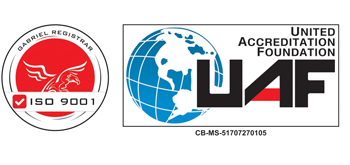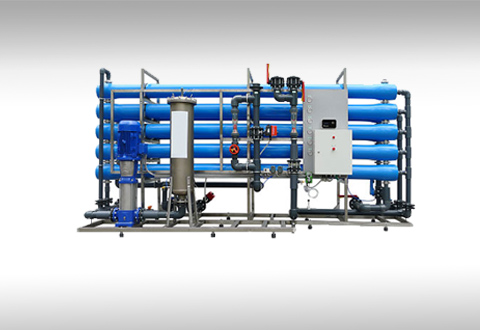Blog
Membranes for reverse osmosis (RO) are used in water and wastewater treatment plant in UAE to effectively remove salts and other contaminants. Many distinct elements, such as feed qualities and operating parameters throughout operation, have an impact on RO membrane performance.Small holes in a semipermeable membrane restrict pollutants while allowing water molecules to pass through. As water travels across the membrane via osmosis, it gets increasingly concentrated in order to achieve balance on both sides.Reverse osmosis, on the other hand, prevents pollutants from accessing the membrane's less concentrated side. When reverse osmosis is applied to a volume of saltwater, for example, the salt is removed and only pure water comes through.
What is a reverse osmosis system and how does it work?
A pre filter removes sediment and chlorine from water before forcing it through a semipermeable membrane to remove dissolved particles in a reverse osmosis system provided by a Reverse Osmosis Plant supplier.Before entering a dedicated faucet, water departs the RO membrane and flows through a postfilter to polish the drinking water. The quantity of pre filters and postfilters in a reverse osmosis system determines the stages.
The stages of a RO system
A reverse osmosis system is centred on the RO membrane, but it also contains other forms of filtration. RO systems have three, four, or five stages of filtration. A sediment filter and a carbon filter are included in every reverse osmosis water system, in addition to the RO membrane. Depending on whether water travels through them before or after passing through the membrane, the filters are referred to as pre filters or postfilters.
Each system type includes one or more of the following filters:
Sediment filter: Filters out particles such as dirt, dust, and rust.
Carbon filter: Reduces the amount of volatile organic compounds (VOCs), chlorine, and other impurities in water that give it a poor taste or odour.
Semi-permeable membrane: Removes up to 98% of total dissolved solids (TDS)
- Prefiltration occurs when water initially enters a RO system.To remove sediment and chlorine that might clog or harm the RO membrane, prefiltration often comprises a carbon filter and a sediment filter.
- The water is then passed over the reverse osmosis membrane, which removes dissolved particles that are too tiny to be detected with an electron microscope.
- Water goes to the storage tank after filtering and is kept there until it is required. A reverse osmosis system filters water until the storage tank is full, at which point it shuts off.
- When you turn on your drinking water faucet, water exits the storage tank and passes through another postfilter to polish the water before it reaches your faucet.
What is the purpose of a RO storage tank?
An RO storage tank stores reverse osmosis water, allowing you to have sufficient on hand when you need it. Water is produced slowly using a reverse osmosis system. Two to three ounces of RO water are produced in one minute. If you turned on your faucet for a glass of water at the current membrane production rate, it would take at least 5 minutes to fill. Your glass fills immediately with a storage tank.
What is removed by a reverse osmosis system?
The RO membrane in a reverse osmosis system eliminates dissolved solids such as arsenic and fluoride. For a broad range of reduction, a RO system contains sediment and carbon filtration. An RO system's carbon filters remove chlorine as well as poor taste and smells, while the sediment filter removes dirt and debris.
Advantages of a Reverse Osmosis System
One of the most comprehensive techniques of filtering is a reverse osmosis system. It eliminates 98 percent of dissolved solids, making it safer to drink. The only alternative drinking water system that decreases TDS is a water distiller, however it is less efficient than a RO system.
- Reduced levels of harmful dissolved pollutants
- Sodium has been lowered.
- Reduced bad tastes and scents
- kinder to the environment than bottled water
- Simple to set up and maintain
- Fits beneath the kitchen sink
Is reverse osmosis environmentally friendly?
When the water in your house drains, chemicals and other impurities must be removed before it may be recycled. Wastewater is either transferred to a water treatment facility and diluted to make it simpler to treat, or it is routed to riverbeds to be filtered by nature through the hydrologic cycle. A reverse osmosis system improves the efficiency of waste treatment. Because chemicals are eliminated during the carbon filtering step, reverse osmosis water discharged from your home is already chemical-free. The dissolved inorganics content in the residual brine water is just slightly greater. Because no new contaminants are added into the water supply once RO water drains from your home, RO systems accelerate the recycling process.
What is the function of reverse osmosis membranes?
The reverse osmosis membranes are the heart of reverse osmosis systems. These parts are in charge of the actual filtering process within these systems and must thus be of the highest quality.Many RO operators prefer to use lesser grade membranes in order to reduce operational costs. While this approach reduces immediate plant expenses, it has a significant impact on overall productivity and long-term costs.The performance gap between excellent and low quality reverse osmosis membranes is dramatic, with the former delivering significantly more effective filtration outcomes.Greater rejection percentage, energy savings, and fouling resistance are the three key benefits bestowed upon RO operators that invest in and use better membrane components.
Conclusion
One stage of pressure vessels plus a second pass make up the SWRO system. Pressure vessels are used at three phases in the RO process. The pre-treated water (Cartridge filter exit water) is pushed through a reverse osmosis system at high pressure to remove dissolved salts from the water. Desalinated (permeate) water is the result of this process. On the RO Reject side, an energy recovery unit, or Turbo Charger, is placed to minimise the pump size required, reduce power consumption, and optimise RO operation. The Turbocharger will recover high pressure at the RO reject and boost High Pressure Pump pressure at the RO feed side, lowering the necessary high pressure and lowering the High Pressure Pump running power costs.The high-pressure pump is equipped with a variable-frequency drive (VFD) to ensure that the plant operates at optimal pressure based on fluctuating feed TDS and temperature. As a result, the plant's power usage and maintenance costs are lowered.
Wattek is here.
Wattek LLC has built thousands of reverse osmosis systems that are in use across the world, generating millions of gallons of water every day. Please contact us if you have any water treatment requirements.


